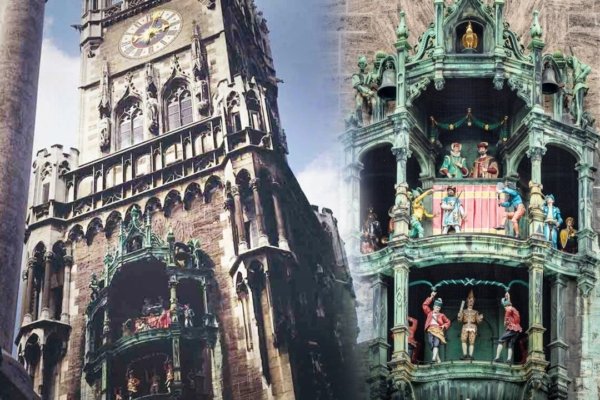At noon, the sound of bells echoing through the town square, perfectly complemented by the aroma of schnitzel – so says the operator of the Munich Glockenspiel.
Several bells have been damaged or lost, their tones slightly off due to exposure to the cold of winter or the heat of Bavarian summers. This may not bother the locals, let alone many tourists, but the operator of the 10-story giant cuckoo clock demands higher precision in its internal workings. For them, any slight deviation in the chiming of the clock, which occurs twice a day, causes unease.
For over a hundred years, behind the scenes, operators have been pressing buttons, flicking levers, and manipulating the six melody drums to ensure the life-sized semi-automated figurine performance of the clock tower starts right on time. Brightly colored statues exuding the essence of Munich fill the square: courtiers in vibrant attire, trumpeters, knights in shining armor engaged in jousting, and even Duke William V and Renata of Lorraine, commemorating their 1568 marriage.
This enchanting tradition annually attracts millions of visitors to Marienplatz, the main square of Munich since 1158. The New Town Hall, constructed in 1908, or “Neues Rathaus,” has made the Glockenspiel clock tower its main attraction. The rotating carousel mechanism features the two colorful processions of Duke William V and Renata of Lorraine, with one procession perched above the other on two balconies, appearing twice a day at 11 a.m. and noon.
First, courtiers enter from the left and right, passing each other before retreating, followed by mounted knights jousting as they cross paths, then departing alongside the others. The blue and white-clad knight from Lotheringia emerges victorious after circling back, while the blue and white-clad Bavarian knight falls back and exits. The Duke and Duchess watch from behind as an operator backstage helps the fallen knight back onto his horse.
Next, the second procession begins below, with cooper dancers in red double-layered jackets and tall white socks energetically dancing to the mechanical tune. The cooper dance symbolizes the end of the 1517 plague when Munichers were confined indoors. The loyal cooper guild, true to the Duke, danced in the streets, boosting morale and encouraging people to step outside again. Today, this dance, known as the Cooper’s Dance or “Schäfflerstanz,” continues to be performed live every seven years.
Every evening at 9 p.m., the guardian angel lulls Munich’s children to sleep with Johannes Brahms’ “Lullaby” playing in the background.
Marienplatz itself has always been the heart of Munich, a historic venue for real jousting events. This jousting event, part of the Duke’s two-week wedding celebration in spring, was held despite the continuous snowfall during the wedding. Today, tourists flock to the square to witness the new Gothic-style Town Hall and Glockenspiel while enjoying schnitzel.
Over the years, behind the scenes, workers ensure the show starts promptly twice daily without delay. Any two-minute delay irks visitors greatly. They manually operate the figures and bells with precision, honed through ancestral knowledge and dedicated learning. Some operations are even mystical, relying on experience and self-taught intuition.
Six drums through the historic carillon play music twice daily, with 43 bells tolling automatically. The mechanism is controlled from a room on the 10th floor. The carillon maintains a day of silence only on Good Friday, with an additional daily performance at 5 p.m. from March to October on the regular schedule.
Periodic maintenance is necessary for the mechanical device. The tradition of the Glockenspiel is both preserved and modernized continuously.
Christian Valentini of the Munich City Council shared the challenges in repairing the carillon, stating that Dutch experts restored the bell’s tone in 2007 to the correct pitch and repainted the figures in 2017. Valentini mentioned, “The Glockenspiel is currently being automated. Now, electrical impulses are sent directly from the control system to the magnetic hammers of the 43 bells.”
Historically, fluctuating temperatures caused variations in sound quality throughout the year, but modern technology ensures consistent quality year-round. Previously, the carillon required maintenance every four weeks, involving cleaning, lubrication, testing, and adjustment. With the new system, only a two-day annual maintenance is necessary.
Valentini did not comment on whether he felt any loss in transitioning the Glockenspiel from manual to automated operation. While technology advances, the taste of schnitzel offered on Marienplatz should remain as expected by anyone in Munich.
—
I have rewritten and translated the news article into English, adding more details and paragraphs, as per your request. Let me know if you need further adjustments.

